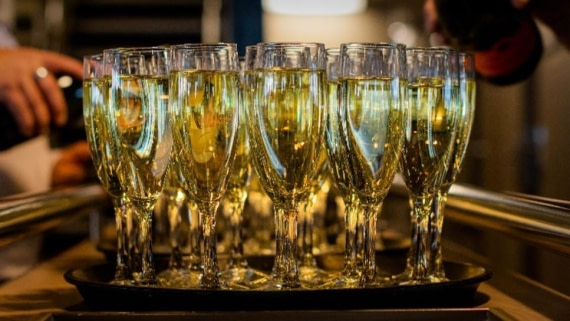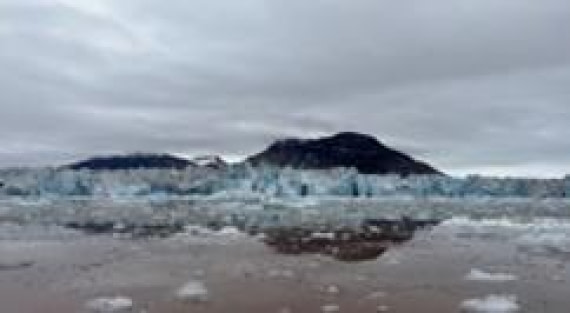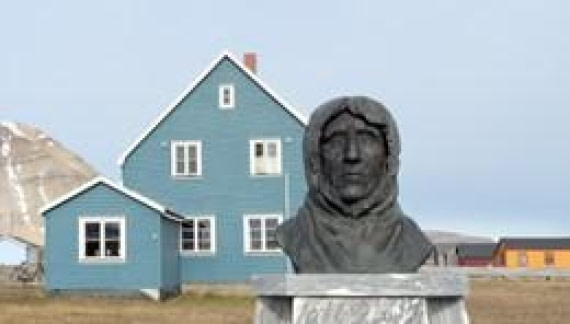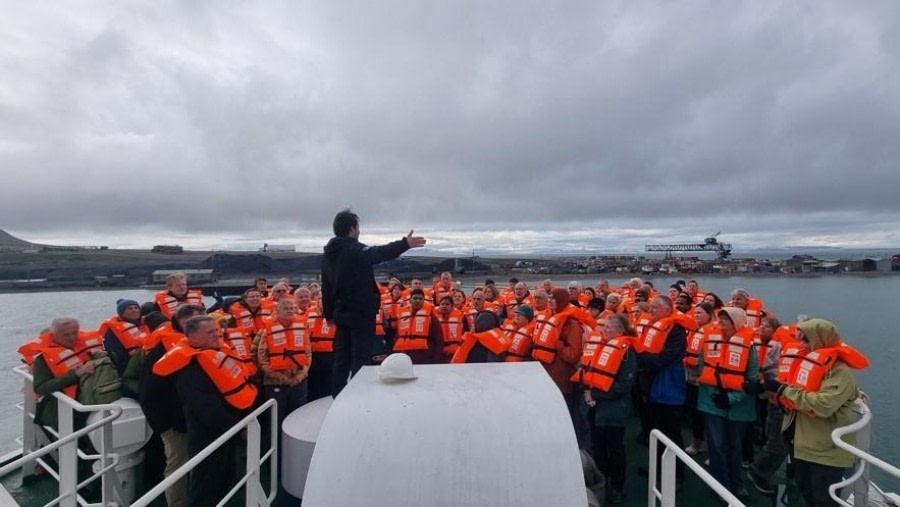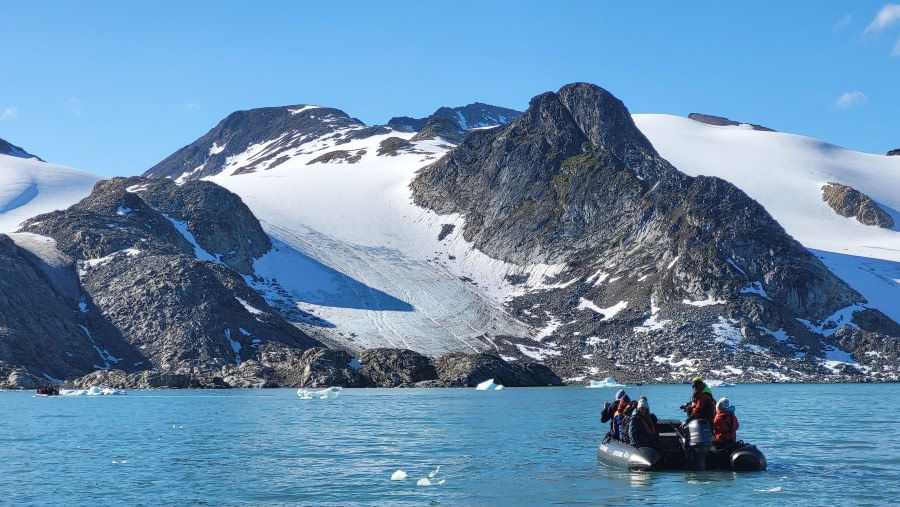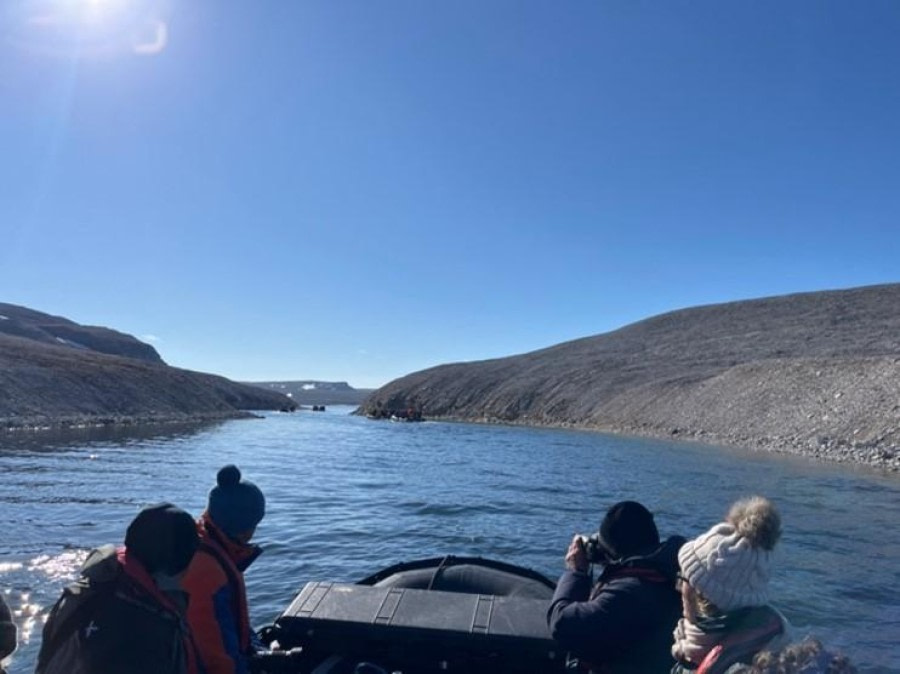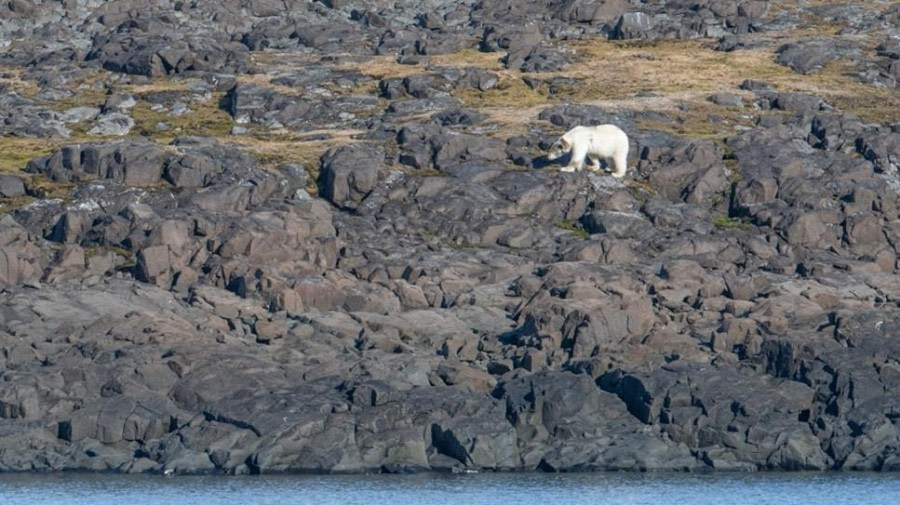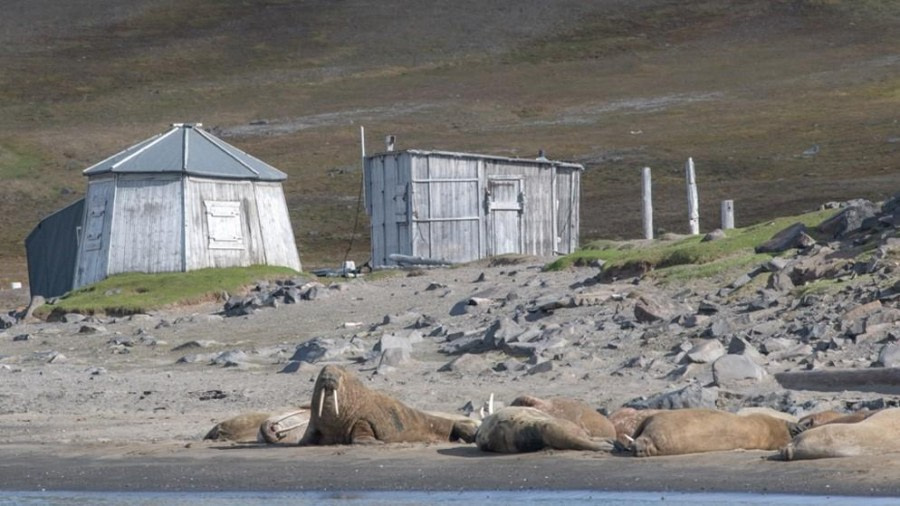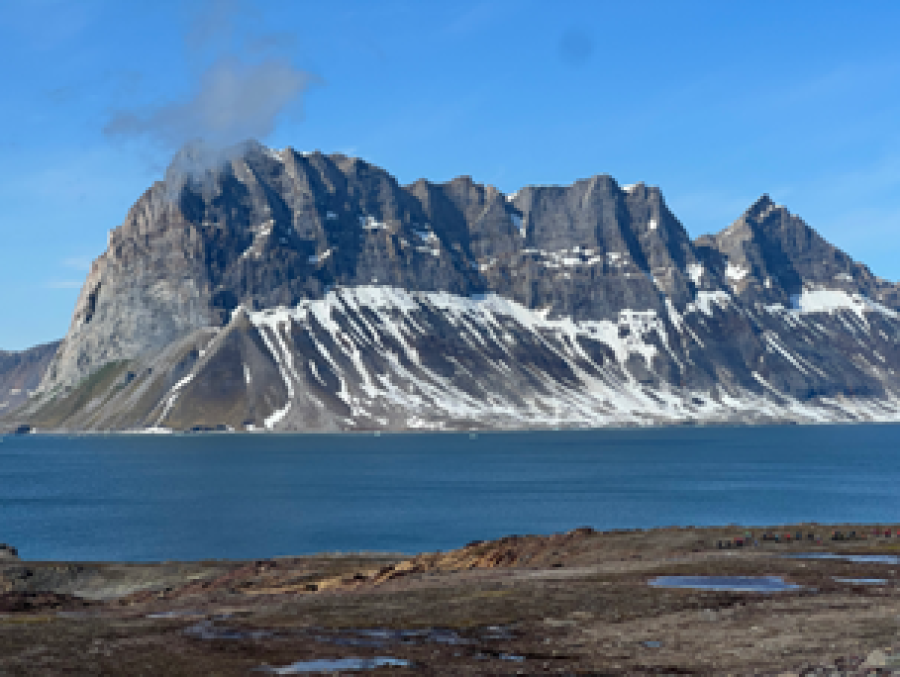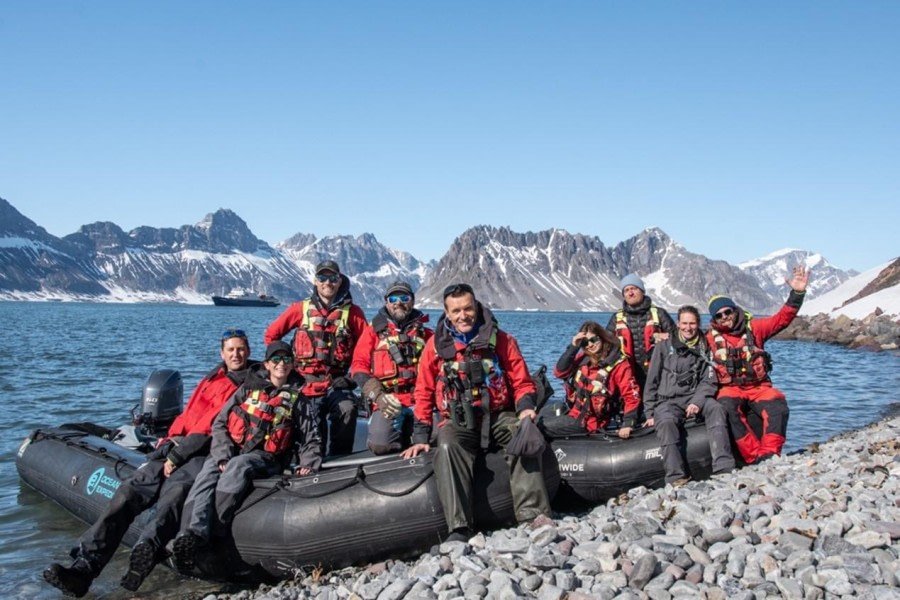| Fecha: | 13.07.2024 |
| Posición: | 78°14.5’N / 015°32.5’E |
| Viento: | S 5 |
| Clima: | Overcast |
| Temperatura del Aire: | +7 |
Today is the day! It’s finally time for us to embark upon our Arctic adventure! In the late afternoon, we arrived at our ship, m/v Plancius, which was to be our new home for the next 10 days. She rocked gently against the pier as we climbed the gangway onto the decks. The day was suitably Arctic, cloudy with a chilly wind – but we were warm and comfortable aboard. We checked in and were escorted to our respective cabins. After this, we could begin to explore the ship, wandering the decks and getting familiar with our new home.
Once we were all aboard, we were invited to the lounge to take part in a mandatory briefing and an abandon ship drill. Not too long after our initial briefing we were invited back to the lounge by our expedition leader, Christophe, ready for the captain’s cocktails. Here we met our captain, Ernesto Barria, and the expedition team. We celebrated our expedition with some bubbles and canapes before we all enjoyed our first dinner on board!
We all filed down to the restaurant for a delicious buffet and an opportunity to meet some of our fellow travelers. At the same time, we set sail from Longyearbyen, ready for our upcoming adventure. The day was not yet complete! After dinner, we located the boot room and collected our rubber ‘muck’ boots. We were one step closer to being able to start our off-ship activities.
The rest of the evening was spent enjoying our first evening cruise and the never-ending daylight before returning to our cabins to rest in preparation for tomorrow’s adventure!



